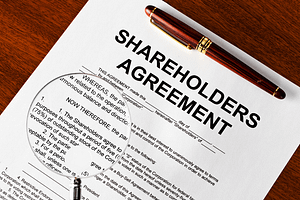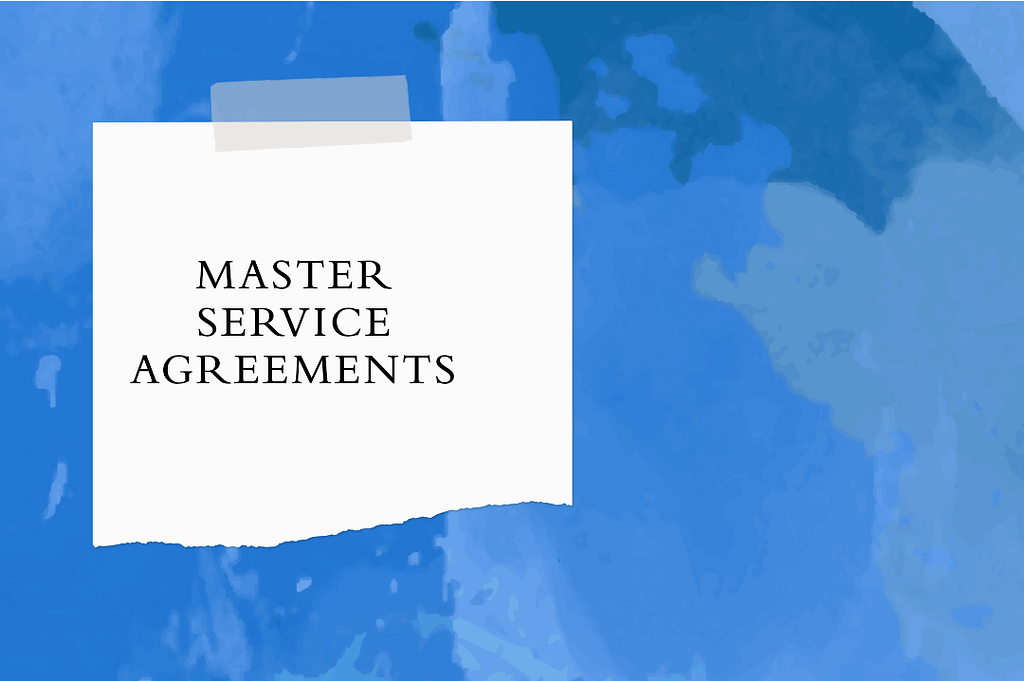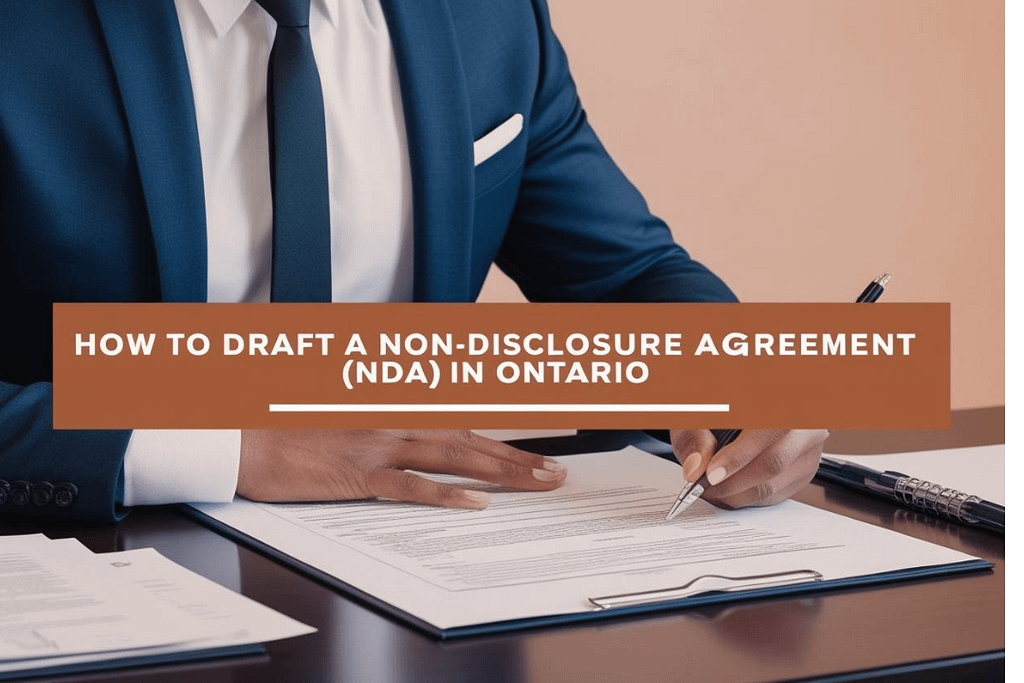In Ontario, the Business Corporations Act (OBCA) provides the basic rules for running a corporation, but it does not cover every detail of how owners interact. A shareholder agreement is a private contract among the owners that fills in those details. It legally binds shareholders to agreed-upon rules about decision-making, share transfers, dispute handling and more. In practice, this rulebook for the company can determine what happens during a merger or acquisition (M&A). For example, before any deal closes an acquisition, the shareholder agreement often has already established who has to approve the sale and how proceeds will be split. Without such an agreement, shareholders would default to the OBCA’s general rules.
What Is A Shareholder Agreement?
A shareholder agreement (SHA) is a contract that sets out the rights and obligations of shareholders beyond the default law. It specifies who owns what percentage, how the company is governed, and how key decisions (like selling the company) are made. Unlike the mandatory documents for incorporation (articles, bylaws, etc.), shareholder agreements are optional under the OBCA, but they become essential once shareholders want clarity and protection. For example, a well-drafted SHA might detail how often shareholders meet, who can nominate directors, and what matters require a unanimous or supermajority vote.
In Ontario there are two main types of shareholder agreements: general and unanimous. A general SHA involves some or all shareholders and is treated like a commercial contract alongside the company’s bylaws. It covers issues such as voting procedures, share transfers, and minority protections. A Unanimous Shareholder Agreement (USA) is a special kind that all shareholders sign. A USA can actually transfer powers from the board of directors to the shareholders themselves, which the OBCA specifically allows. In other words, under a USA the shareholders may effectively run the company without a board. Because a USA restricts directors’ powers, Ontario law says it must be in writing, signed by every shareholder, and noted on share certificates so future owners are bound.
Although not legally required, SHAs are very common in private businesses. They are especially important for closely-held companies, startups, or joint ventures where a few people own most shares. In fact, relying on a simple online template SHA can lead to costly mistakes. A tailored agreement gives owners more certainty. For example, instead of defaulting to OBCA majority rules, an SHA can explicitly protect a minority shareholder with veto or pre-emptive rights. Overall, a shareholder agreement adds a layer of predictability to the governance of the company and thus can greatly benefit parties in an M&A process.
Why Shareholder Agreements Matter In M&A
When a company is sold or merged, multiple shareholders usually must agree to the transaction. In Ontario, many major transactions require special shareholder resolutions (often a two-thirds or unanimous vote). A shareholder agreement can pre-determine how that approval works. During the M&A process you need shareholder approval to sell the business, and without an advance agreement, the statutes give a lot of authority to individual shareholders to potentially block a deal. In practice this means a single dissenting owner could stop a sale, unless the SHA already set a clear rule (for example, requiring a 75% vote to sell).
Moreover, shareholder agreements define exit strategies before a sale opportunity even arises. They can lay out exactly how shares will be valued and transferred upon a sale or IPO. For instance, a SHA might include drag-along and tag-along rights. It may also include put/call options or a shotgun clause to facilitate buyouts. A well-drafted SHA can make the exit process transparent and amicable, directly benefiting everyone in an M&A deal.
Also Read: Importance of Shareholder Agreements
Key Roles Of Shareholder Agreements In M&A Transactions
A shareholder agreement serves multiple critical functions in an M&A context.
- Governance and Voting: The SHA may require specific vote thresholds for key decisions. For instance, it might demand a unanimous vote to approve an M&A transaction or to change the corporate charter. This prevents a single shareholder from unilaterally selling or altering the company, and ensures all major stakeholders have input.
- Share Transfer Controls: The agreement can tightly regulate who can buy and sell shares. It often stipulates that transfers to outsiders require existing shareholders’ approval or right of first refusal. It also establishes the mechanics for tag-along and drag-along rights. For example, if a majority shareholder intends to sell, they must notify others and allow them to join the sale at the same price (tag-along). Conversely, they can “drag” all shareholders into a sale to a strategic buyer on agreed terms, enabling a clean exit.
- Exit Mechanisms and Valuation: Many SHAs include buy-sell provisions, put/call options and predetermined valuation methods. A put option lets a shareholder demand to sell under agreed terms, while a call option allows others to buy shares on set conditions. A shotgun clause is a form of buy-sell where one party offers a price for all shares, and the other chooses to accept or buy out the first party at that price. These tools ensure that when an exit event comes (like retirement, death, or a sale opportunity), there are clear procedures to transfer or value the shares.
- Dispute and Deadlock Resolution: The agreement should spell out how to resolve disagreements, which is vital if an M&A deal hits a snag. Common approaches include mediation or arbitration clauses, which can resolve conflicts faster and cheaper than court. A frequent mechanism is the shotgun buy/sell, which can break a deadlock by forcing a buyout instead of litigation. By building in these processes, a SHA can keep an M&A on track even if shareholders clash.
- Minority Protection: The SHA can explicitly protect minority investors during a sale. Beyond tag-along rights, it can include informational rights, vetoes over fundamental changes, or extra approval rights for board changes. These safeguards give minority shareholders confidence that an M&A won’t leave them disadvantaged. For example, they might require the majority to give fair notice of an M&A and share in the proceeds equitably.
Together, these roles mean that a shareholder agreement in an M&A is not just paperwork – it is the blueprint for how the deal will unfold. It governs who calls the shots, how the exit path works, and how conflicts are handled, all of which are crucial for a smooth acquisition or merger.
Also Read: Merger vs. Amalgamation: How Ontario Companies Can Make the Right Choice
Illustrations
1. Tag-Along Rights in Action:
Three co-founders launch a tech startup and bring in an angel investor who buys 60% of the shares. Knowing that the investor might want to sell later, the founders negotiate tag-along rights in their shareholder agreement. A few years later the investor finds a buyer for its entire stake at $30 per share. Due to the tag-along provision, the three founders can include their shares in the sale and exit at the same price. This means all four shareholders benefit equally from the sale, rather than the founders being left behind if only the investor sold.
2. Enforcing a Shotgun Clause:
In a joint venture on a real estate project, two partners hit a deadlock and one triggers a shotgun buy/sell in their agreement. The offering partner names a price to buy out the other’s interest, and under the clause, the other must either sell or buy at that price. Even when the project faced unexpected delays (for ex, due to COVID-19 restrictions), the shotgun clause can be enforced and the purchase can proceed. This case shows that such clauses can be powerful tools to resolve disputes without unravelling the entire deal.
Notable Case Laws
Sunwing Canada Inc. v. Holiday Network Inc. (2003 CanLII 29336 ONSC)
In this case, disputes arose following a series of mergers involving multiple travel companies. The parties’ earlier Unanimous Shareholders Agreement included conflict-of-interest and valuation provisions, but ambiguities about its termination and continuing effect led to litigation. The Ontario Superior Court recognized that valuation records were relevant to determining the shareholders’ entitlements, highlighting the importance of having clear valuation, termination, and conflict-of-interest clauses in shareholder agreements.
This case illustrates that when shareholder agreements do not expressly address how rights survive mergers or sales parties may face prolonged disputes over ownership value and obligations. Such issues can be avoided through careful drafting.
Front Street Capital 2004 (Re), 2009 CanLII 67424 (ON SEC)
This is a decision of the Ontario Securities Commission approving the amalgamation of two mutual fund corporations- Front Street Mutual Funds Limited and Front Street Special Opportunities Canadian Fund Ltd. The merger was carried out under section 182 of the Canada Business Corporations Act and required shareholder approval through a special meeting. The OSC noted that all shareholders received detailed disclosure about the transaction, its tax implications, valuation continuity, and their statutory rights including the right to dissent and be paid the fair value of their shares.
Although this case concerned public investment funds, it illustrates foundational principles applicable to private Ontario shareholder agreements in M&A transactions. Specifically, it highlights the importance of embedding clear approval mechanisms, valuation procedures, and minority protection clauses within the shareholder agreement. The ability to redeem or dissent mirrors private law mechanisms such as buy-sell provisions and exit strategy clauses. This decision underscores that the essence of a well-structured shareholder agreement lies in ensuring fairness, transparency, and continuity of shareholder rights.
Golden Star Resources Ltd. v. IAMGold Corp. (2004 CanLII 66301, ON SC)
In this case, the Ontario Superior Court considered whether a standstill clause in a confidentiality agreement could bar a competing takeover bid. The Court held that such private arrangements cannot override the broader principles of shareholder democracy and fair corporate conduct. Although not a shareholders’ agreement per se, the case underscores that pre-transaction agreements including standstill and lock-up provisions must not impair shareholders’ ability to consider competing offers. This reasoning reflects the courts’ broader reluctance to enforce contractual clauses that unduly limit shareholder participation in M&A transactions.
Common Pitfalls Without A Shareholder Agreement
Without a shareholder agreement, an M&A transaction can face many hazards:
- Default Rules and Uncertainty: In the absence of agreement, Ontario law defaults to majority control and limited protections for minorities. Any shareholder can use statutory rights (like the oppression remedy under the OBCA) to challenge a transaction, but this is powerful but costly. Relying on the court instead of clear contractual rules can delay a deal or even stop it altogether.
- Blocking or Stranded Shareholders: Without tag-along or drag-along provisions, a majority shareholder might complete a deal without the minority, leaving them owning a share they can’t easily sell. Conversely, a minority might refuse a sale, forcing all parties into a risky dispute. Such scenarios are common pitfalls when there are no agreed-upon exit terms.
- Disputes Over Value: If there is no pre-defined valuation method, shareholders may fight over how much the company (or its shares) is worth. A buyer and sellers with different expectations could clash, derailing the sale. Similarly, if there’s no shotgun or buy-sell clause, a disagreement can leave the company stuck with no way to force a resolution.
- Unplanned Succession: Without provisions for events like death or retirement, an M&A can unravel. For example, if a key shareholder dies and their shares pass to heirs not involved in the business, the original owners may be compelled to work with unwanted partners, complicating a sale. A SHA usually anticipates these events with buy-out clauses.
In summary, lacking a shareholder agreement means M&A participants are left to navigate the generic rules of corporate law. This uncertainty can increase risk for buyers and sellers alike, potentially scaring off a deal or leading to expensive legal battles.
How Lawyers Add Value In Drafting Shareholder Agreements
Business lawyers play a vital role in making shareholder agreements work for M&A. They bring deep knowledge of Ontario corporate law (OBCA/CBCA) and M&A practice to the table. For instance, they ensure that clauses like tag-along or drag-along comply with statutory requirements and are enforceable. They help shareholders avoid “off-the-shelf” templates and instead negotiate terms that suit the specific business structure and owners’ goals.
A skilled lawyer will tailor the agreement’s governance terms to match the parties’ reality – for example, setting appropriate vote thresholds or board composition. They will draft clear valuation formulas so that if an exit is triggered, everyone understands the math. They also plan ahead: anticipating issues like deadlocks, funding needs, or changes in control and building in solutions. Throughout, lawyers ensure the language is precise to avoid loopholes.
In short, by investing in proper legal drafting, businesses save time and money in the long run. A well-drafted shareholder agreement – created with a lawyer’s guidance – provides a stable framework for any M&A, reducing conflicts and facilitating smoother transactions.
Also Read: Finding the Right Corporate Lawyer in Toronto
Conclusion
In the realm of mergers and acquisitions, a Shareholder Agreement operates as the cornerstone of post-transaction governance. It delineates the rights, duties, and remedies of the parties who together constitute the corporate body. Under the Ontario Business Corporations Act (OBCA), while corporate bylaws and statutory provisions establish a broad framework, it is the Shareholder Agreement that tailors this framework to the unique commercial realities of the parties involved. It provides the mechanisms for management control, minority protection, transfer restrictions, valuation methods, and dispute resolution.
The absence of such an agreement often results in ambiguity, protracted litigation, and erosion of shareholder value. Thus, a SHA in mergers and acquisitions harmonizes ownership with management, and investment with accountability. Engaging competent legal counsel at the drafting stage ensures that the document aligns with both the transaction’s strategic intent and the mandatory provisions of the OBCA.
Need Expert Help Drafting a Shareholder Agreement in Ontario?
At Pacific Legal, our corporate lawyers in Toronto specialize in crafting shareholder agreements that protect your rights and streamline M&A transactions.
Book a Consultation today to ensure your agreement is clear, enforceable, and built for long-term success.








